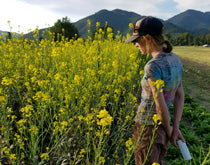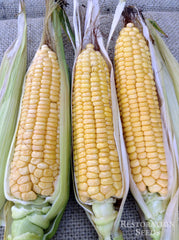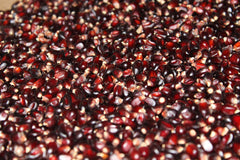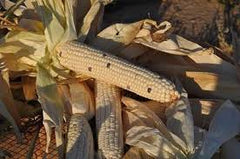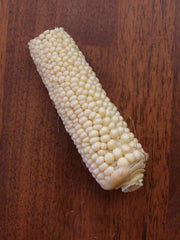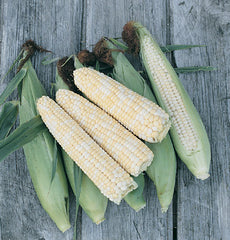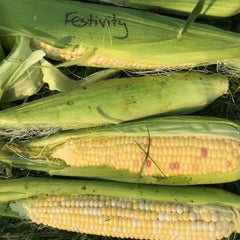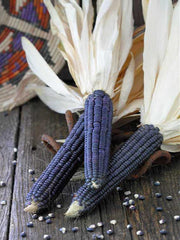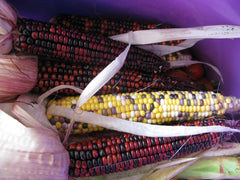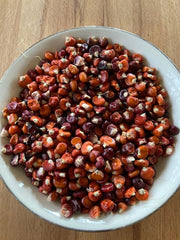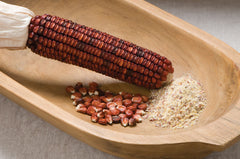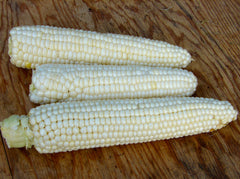Top Hat
Days from maturity calculated from the date of seeding. Average 120–156 seeds per ounce, about 10–15 pounds per acre. Average 29M seeds per acre, ranges from 28M to 45M per acre. Federal germination standard: 75%. Usual seed life: 5-10 years. Isolation distance for seed saving: 2 miles.
Planting Depth 1-2”
Soil Temp. Germ. 55–65˚F
Days to Germ. 4-14
Plant Spacing 8”
Row Spacing 30”
Days To Maturity 82
Full Sun, Moist Well Drained
Top Hat Seed Count
.25 Pound ≈ 580 seeds
- 100 Seeds$4.10
- 1/4 lb$18.50
Open-pollinated super sweet yellow corn with 7-1/2” ears, bred by the late seed breeder, Jonathan Spero of Lupine Knoll Farm. Delicious freshly steamed or boiled. Jonathan Spero wrote about the “Top Hat corn story: Nearly all of the improvements in sweet corn in the last half century or more have been bred a...
Open-pollinated super sweet yellow corn with 7-1/2” ears, bred by the late seed breeder, Jonathan Spero of Lupine Knoll Farm. Delicious freshly steamed or boiled. Jonathan Spero wrote about the “Top Hat corn story: Nearly all of the improvements in sweet corn in the last half century or more have been bred as hybrids. Open pollinated (OP) varieties, ones from which you can save seed, are way behind. Fortunately, this should not be too hard to remedy.
One of the simplest methods to make a more modern OP variety is to choose a good hybrid and “de-hybridize” it. This is done by growing out the seed and saving and replanting the best for several generations until it is reasonably stable.
”
This is Open Source Pledged Seed (OSSI). By purchasing this seed you are a part of the Free The Seed movement. This variety is registered as an OSSI-pledged variety and seed. “You have the freedom to use these OSSI-Pledged seeds in any way you choose. In return, you pledge not to restrict others’ use of these seeds or their derivatives by patents or other means, and to include this pledge with any transfer of these seeds or their derivatives.” To learn more, visit: www.osseeds.org/about/.
Tags: Type: Sweet, Color: Yellow, Size: Large, Heritage: Heritage: New Variety, Heritage: Open Source OSSI, Season: Summer, Certification: Organic.
Meet Your Farmer
We promote fair trade, organic practices and environmental responsibility throughout the Restoration Seeds supply chain. Below are the family farmers and seed suppliers who bring our open pollinated seeds to you.
